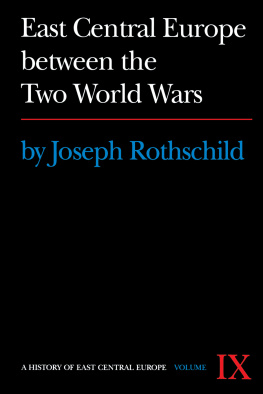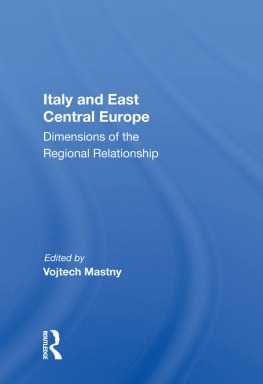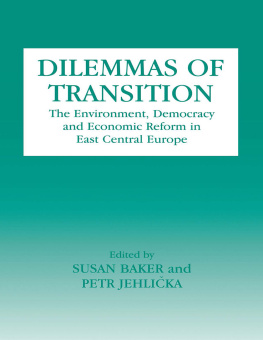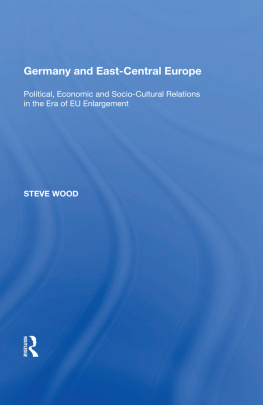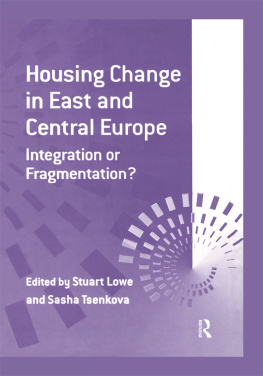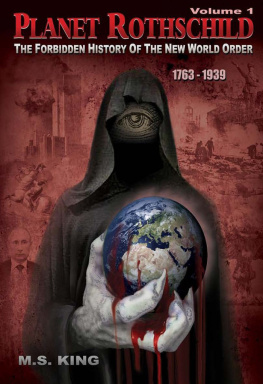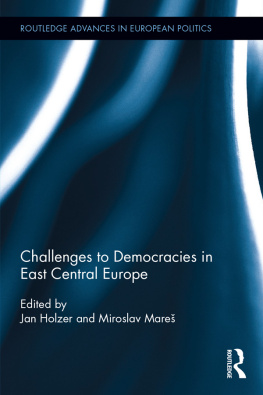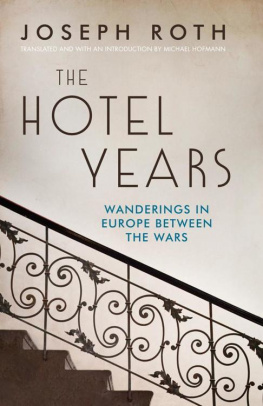A History of East Central Europe
VOLUMES IN THE SERIES
I. | Historical Atlas of East Central Europe
by Paul Robert Magocsi |
II. | The Early Middle Ages in East Central Europe
by Charles E. Bowlus |
III. | East Central Europe in the Middle Ages, 10001500
by Jean Sedlar |
IV. | The Polish-Lithuanian State, 13861795
by Daniel Z. Stone |
V. | Southeastern Europe under Ottoman Rule, 13541804
by Peter F. Sugar |
VI. | The Peoples of the Eastern Habsburg Lands, 15261918
by Robert A. Kann and Zdenk V. David |
VII. | The Lands of Partioned Poland, 17951918
by Piotr S. Wandycz |
VIII. | The Establishment of the Balkan National States, 18041920
by Charles and Barbara Jelavich |
IX. | East Central Europe between the Two World Wars
by Joseph Rothschild |
X. | East Central Europe since 1939
by Ivo Banac |
Forthcoming
VOLUME IX
East Central Europe
between the Two World Wars
A HISTORY OF EAST CENTRAL EUROPE
VOLUME IX
EDITORS
PETER F. SUGAR
University of Washington
DONALD W. TREADGOLD
University of Washington
East Central Europe between the Two World Wars
BY JOSEPH ROTHSCHILD
UNIVERSITY OF WASHINGTON PRESS
Seattle and London
Copyright 1974 by the University of Washington Press
Second printing (pbk.), with corrections, 1977
Eighth printing (pbk.), 1998
Printed in the United States of America
All rights reserved. No part of this publication may be reproduced or transmitted in any form or by any means, electronic or mechanical, including photocopying, recording, or any information storage or retrieval system, without permission in writing from the publisher.
Library of Congress Cataloging-in-Publication Data
Rothschild, Joseph.
East Central Europe between the two World Wars.
(A history of East Central Europe, P. F. Sugar and D. W. Treadgold, editors, v.9)
Bibliography: p.
1. Europe, EasternHistory. I. Title. II. Series: Sugar, Peter F.
A history of East Central Europe, v.9.
DR36.S88 vol.9 [DR48] 914.9s[320.949] 748327
ISBN 0295953578 (pbk.)
The paper used in this publication meets the minimum requirements of American National Standard for Information SciencesPermanence of Paper for Printed Library Materials, ANSI Z39.481984.
For Nina and Gerson
FOREWORD
THE systematic study of the history of East Central Europe outside the region itself began only in the last generation or two. For the most part historians in the region have preferred to write about the past of only their own countries. Hitherto no comprehensive history of the area as a whole has appeared in any language.
This series was conceived as a means of providing the scholar who does not specialize in East Central European history and the student who is considering such specialization with an introduction to the subject and a survey of knowledge deriving from previous publications. In some cases it has been necessary to carry out new research simply to be able to survey certain topics and periods. Common objectives and the procedures appropriate to attain them have been discussed by the authors of the individual volumes and by the coeditors. It is hoped that a certain commensurability will be the result, so that the eleven volumes will constitute a unit and not merely an assemblage of writings. However, matters of interpretation and point of view have remained entirely the responsibility of the individual authors.
No volume deals with a single country. The aim has been to identify geographical or political units that were significant during the period in question, rather than to interpret the past in accordance with latter-day sentiments or aspirations.
The limits of East Central Europe, for the purposes of this series, are the eastern linguistic frontier of German- and Italian-speaking peoples on the west, and the political borders of Rus/Russia/the USSR on the east. Those limits are not precise, even within the period covered by any given volume of the series. The appropriateness of including the Finns, Estonians, Latvians, Lithuanians, Belorussians, and Ukrainians was considered, and it was decided not to attempt to cover them systematically, though they appear repeatedly in these books. Treated in depth are the Poles, Czecho-Slovaks, Hungarians, Romanians, Yugoslav peoples, Albanians, Bulgarians, and Greeks.
There has been an effort to apportion attention equitably among regions and periods. Three volumes deal with the area north of the Danube-Sava line, three with the area south of it, and four with both areas. Four treat premodern history, six modern times. The eleventh consists of a historical atlas and a bibliography of the entire subject. Each volume is supplied with a bibliographical essay of its own, but we all have attempted to keep the scholarly apparatus at a minimum in order to make the text of the volumes more readable and accessible to the broader audience sought.
The coeditors wish to express their thanks to the Ford Foundation for the financial support it gave this venture, and to the Institute of Comparative and Foreign Area Studies (formerly Far Eastern and Russian Institute) and its three successive directors, George E. Taylor, George M. Beckmann, and Herbert J. Ellison, under whose encouragement the project has moved close to being realized.
The whole undertaking has been longer in the making than originally planned. Two of the original list of projected authors died before they could finish their volumes and have been replaced. Volumes of the series are being published as the manuscripts are received. We hope that the usefulness of the series justifies the long agony of its conception and birth, that it will increase knowledge of and interest in the rich past and the many-sided present of East Central Europe among those everywhere who read English, and that it will serve to stimulate further study and research on the numerous aspects of this areas history that still await scholarly investigators.
PETER F. SUGAR
DONALD W. TREADGOLD
Seattle
PREFACE
THE study of East Central Europe between the two world wars is not only intrinsically important for the historical record but is also currently relevant to Americas national concern and interest. The relaxation in the techniques of Soviet control over the East Central European area, and the partial withering of the substance of that control in and over a number of the areas states, elicit and, in turn, are accelerated by the revival of certain political patterns that had been suppressed during the 1940s and 1950s. The experiences and memories of the interwar period of political independence have reasserted themselves and are helping to shape the current and future expectations of these countries societies and elites. Hence a policy of building bridges to these countries requires an awareness of their interwar histories.
Furthermore, both individually and collectively, the several states of interwar East Central Europe present a good body of historical experience for the comparative study of the political and socioeconomic problems that confront developing multiethnic societies in general. Though the strategies adopted for the attempted resolution of these problems by the local East Central European elites at the time proved unsuccessful (quite apart from the fatal intervention of World War II), an analysis of the problems and the strategies as such should have value for scholars, students, and, perhaps, rulers concerned with understanding and mastering similar issues in other societies.

